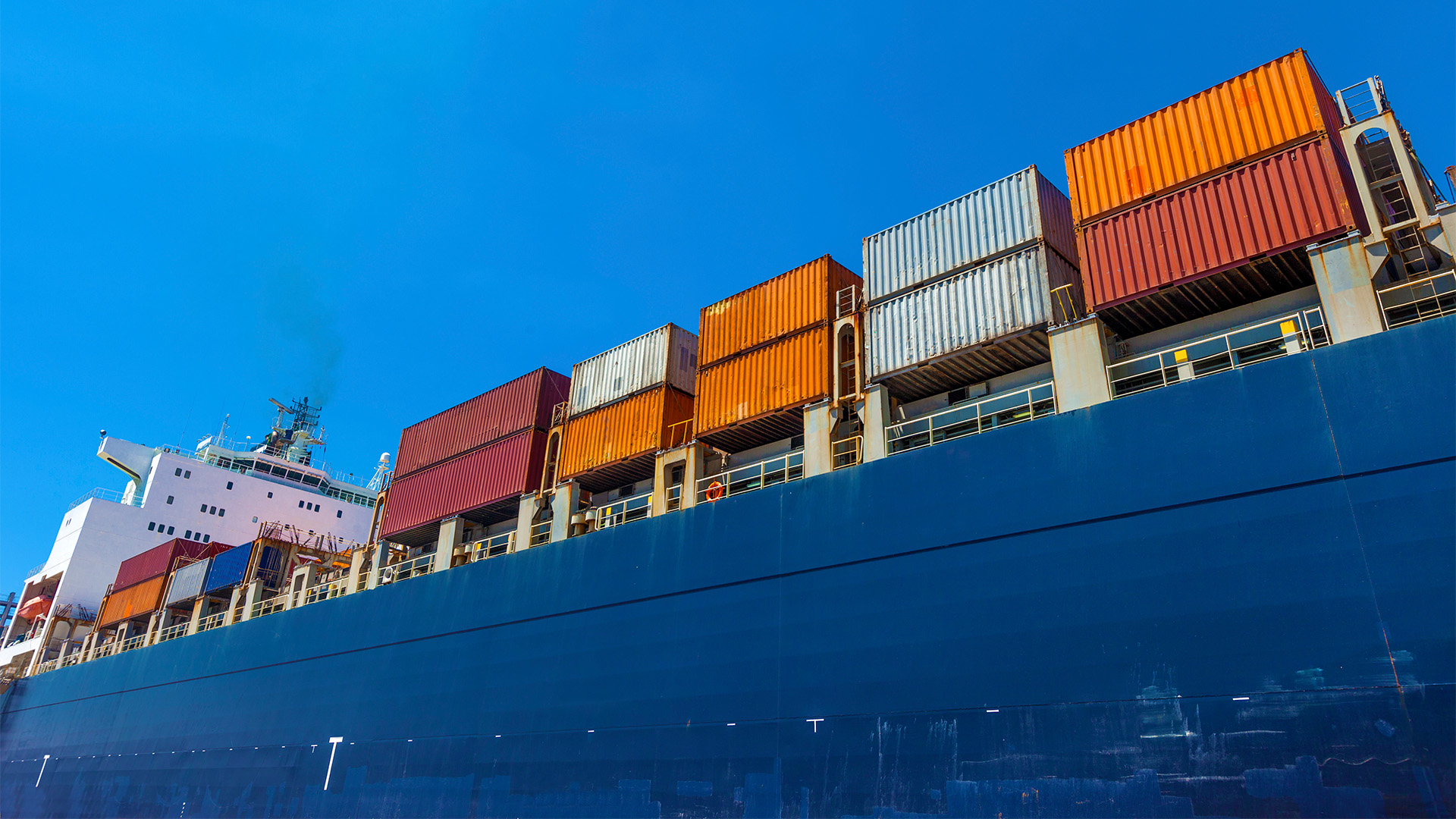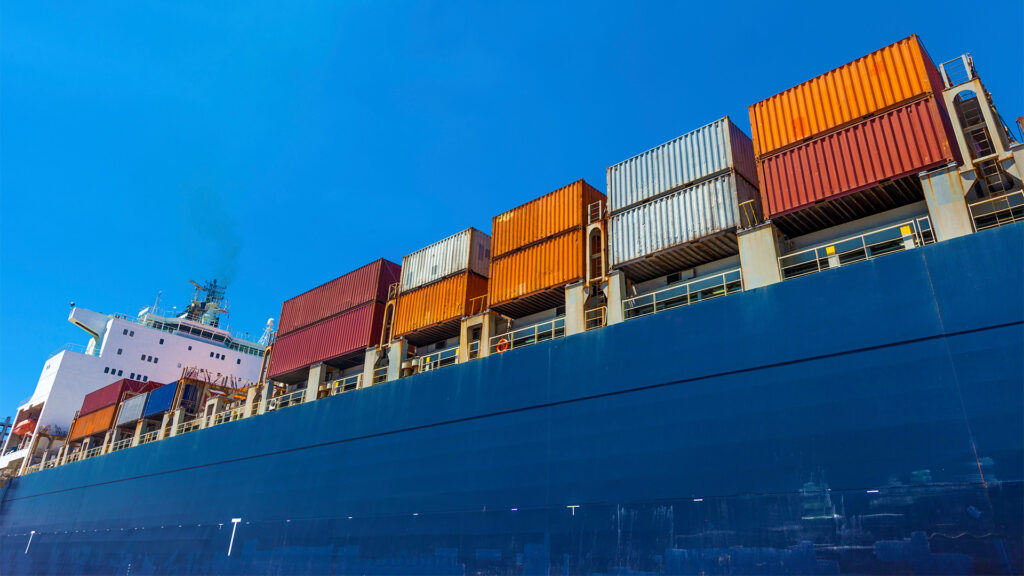

Navigating liability in collisions involving multiple ships
In a judgment handed down today by the Admiralty Court, Cockerill J confirms that a vessel’s faults must have causative potency to attract liability.
Background
At 08:17:35 local time on 14 June 2019, a collision occurred between the claimant’s container ship “X-PRESS MAHANANDA” (XPM) and the defendant’s product tanker “BURGAN” on the approach to Chattogram (still widely known as Chittagong).
The collision occurred at the Gupta Crossing, a sharp bend in the Karnaphuli River in the approaches to Chattogram, where the navigable part of the river narrows. The Gupta Crossing was also noteworthy for a ‘training wall’, normally just below the water surface, constraining the limits of the river and marked on the chart extract contained in the judgment at paragraph 24.1 The Admiralty chart for the area has the following note: “The Karnaphuli River is narrow with sharp bends at Gupta Crossing area. Mariners are advised to navigate with extreme caution when transiting the river”. Rule 9(a) of the International Regulations for Preventing Collisions at Sea 1972 (the COLREGS) states that “A vessel proceeding along the course of a narrow channel or fairway shall keep as near to the outer limit of the channel or fairway which lies on her starboard side as is safe and practicable”.
Facts
XPM was en route from Colombo to Chattogram. She entered the river under pilotage with a 3 knot tidal stream beneath her stern. Throughout the short up-river passage, her speed over ground generally remained above 11 – 11.5 knots until the collision itself. BURGAN had completed cargo operations at Chattogram and was outbound, stemming the strong tidal stream, into the Bay of Bengal. After leaving her berth, she completed a mutually agreed starboard-to-starboard passing with another inbound vessel, which put BURGAN on her port side of the river. BURGAN effectively maintained her course, remaining more or less on her port side of the river and increased her speed to about 7-8 knots over the ground.
Approximately 5 minutes before the collision, “SHAKTI SANCHAR” (SS), a Bangladeshi military ship, entered the Gupta Crossing from the south bank of the bend, apparently with plans to turn to port to continue upriver. As such, SS appeared on BURGAN’s starboard bow. SS then followed the bend in the river and, despite repeated VHF calls from BURGAN to SS requesting that SS turn to port sooner and/or increase her speed to cross in ahead such that BURGAN could then turn to starboard, SS did neither. BURGAN then turned hard to port to pass SS green-to-green, placing herself even further on her port side of the river and into the path of XPM as XPM began her turn to port around the Gupta Crossing.
There then followed frantic and unsuccessful VHF calls between the two pilots on board XPM and BURGAN.
Shortly afterwards, XPM and BURGAN collided at the Gupta Crossing at about 08:17:35 local time in a position well to XPM’s starboard side of the river, at the very edge of the buoyed channel and close to the training wall. The collision was almost head on, with the port bow of XPM colliding with the starboard bow of BURGAN.
Respective Positions
XPM contended that the collision was caused by BURGAN’s failure to stay on her own starboard side of the river. Had she done so, there would have been no collision between XPM and BURGAN, nor would there have been any risk of a collision between BURGAN and SS.
BURGAN’s case against XPM was that, whilst SS bore the majority of the blame for the incident, XPM was also at fault as she was proceeding too fast and should have been more to her starboard side of the river. BURGAN argued that any fault on her part was not causative of the collision. BURGAN further submitted that she was confronted by an unenviable dilemma; if she continued to move to starboard, she risked a collision with SS, but an alteration of course to port would risk collision with inbound traffic such as XPM. In essence, BURGAN argued that she was faultless.
SS, being a Bangladeshi military ship, was not party to the proceedings.
Decision
Cockerill J was faced with a relatively unusual collision action; three vessels potentially at fault with only two being before the Admiralty Court. Section 187(1) of the Merchant Shipping Act 1995 provides:
“… Where, by the fault of two or more ships, damage or loss is caused to one or more of those ships, to their cargoes or freight, or to any property on board, the liability to make good the damage or loss shall be in proportion to the degree in which each ship was in fault …”
As per section 187(1), where there are three or more ships that are alleged to be to blame, the court must decide whether the collision was caused by the fault of two or more ships and, if it concludes that it was so caused, to apportion liability by reference to each one of them (The Miraflores & The Abadesa [1967] A.C. 826). When apportioning liability, the court must not count the number of faults but instead assess by reference to causative potency – that is, the extent to which the fault contributed to the collision and the extent to which the fault contributed to the damage – and blameworthiness. Given that the SS did not take part in proceedings, and following Nordlake v The Sea Eagle [2016] 1 Lloyd’s Rep 656, Cockerill J had to also consider the degree of fault of a non-party.
The court assessed the potential faults of all three vessels. In terms of XPM’s potential faults, Cockerill J held that whilst XPM’s look-out was imperfect, it was not causative of the collision. In relation to the speed of XPM, with the assistance of the Nautical Assessors it was held that due to the rate of the flooding tide and flow of the river it was reasonable, and in fact necessary, for XPM to maintain her actual speed in order to safely navigate the river. However, she should have reduced speed once it was recognised that BURGAN was in her wrong water. Consequently, the speed of XPM was not held to be causative although it may have had some impact on the damage sustained.
On the other hand, Cockerill J held that BURGAN was in breach of Rule 9(a) of the COLREGS by remaining either in the centre of the channel or to her port side since coming off the berth. It was found that BURGAN had ample opportunity to move to her starboard side of the river after unberthing, but she emphatically failed to do so.
BURGAN was also found to have failed to keep a proper look-out in breach of Rule 5 of the COLREGS, which led to SS and XPM not being spotted sooner. Additionally, BURGAN was also held to have breached Rule 6 of the COLREGS by failing to slow or stop once SS was sighted and her intentions unidentified. Lastly, BURGAN was in breach of Rule 34 of the COLREGS by failing to signal her intentions or doubts using her whistle.
With the above in mind, Cockerill J confirmed the causative potency of the faults of BURGAN and SS holding that BURGAN was 65% to blame for the collision, with SS attracting 35% of the blame. The minor faults of XPM were found to have no causative potency, and she was therefore blameless for the collision.
Comment
The judgment is a useful reminder of the importance the Admiralty Court places on the COLREGS, with Cockerill J reiterating the position established in Nordlake v The Sea Eagle, that breaches of the COLREGS will usually be regarded as seriously culpable.
The judgment follows the well-trodden path that apportionment of liability is not simply a matter of totting up each vessel’s faults. Any fault must contribute to the collision. In addition, any causative faults that occur in the final throes of the incident may well be regarded as being less culpable than those of the vessel that created the danger. The same principal applies whether the collision involves two, three or even more vessels.
HFW, led by Toby Stephens and Bob Spearing with assistance from Remi Cruttenden, were instructed by XPM interests.
Footnotes









